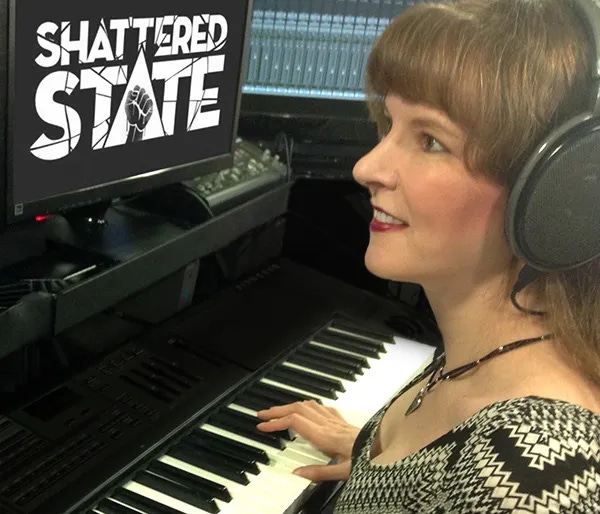
Featured Blog | This community-written post highlights the best of what the game industry has to offer. Read more like it on the Game Developer Blogs.
Using linear music to support information-rich sequences - 2nd in an article series on music for trailers, cutscenes, & cinematics, by composer Winifred Phillips.

By Winifred Phillips | Contact | Follow
Hey, everyone! I’m video game composer Winifred Phillips, and I’d like to welcome you back to our four-part discussion of traditional “scoring-to-picture” techniques within a video game project, and how these play into our work as game composers. We’ve been looking at examples of cinematics, cutscenes and trailers to see how this kind of linear composition style accomplishes specific goals. That list of goals includes:
Characterization
Information
Identity
Narrative
In our previous article, we took a look at how music can best emphasize and support characters during cutscenes and cinematics. By using linear music for the purposes of characterization, we can accentuate the distinct traits of important characters, or provide insight into their state of mind.
Now, let’s consider when our music composition goals are less emotional, and more utilitarian. In this article, we’ll be moving on from characterization to take a look at how information is conveyed in linear cinematics and cutscenes. When the primary goal of a cinematic is to provide players with important details, we can assist by composing music to support the way information is disseminated. This can help players to better absorb all the facts presented.
Information
Often, a game will move players into a visual sequence in order to present a compressed bundle of information that players need in order to advance. It might be a big swath of backstory, or maybe it’s a sweeping overview of the gameplay mechanics. Regardless, the common feature of a visual sequence like this is content density. The game is throwing a lot of information at the player very quickly. In these circumstances, the job of the game composer is to provide musical indicators that will help players sort through the clutter and better absorb the most salient facts. Let’s look at a couple of examples.

Call of Champions was a critically well-received mobile game in the famous Multiplayer Online Battle Arena genre. As a MOBA, the game emphasized competitive multiplayer matches and a set of rules that facilitated strategic teamwork. However, because the game was designed for mobile devices, the ruleset couldn’t be so complex that it confused casual players. Ideally, players would be able to swiftly absorb the rules after downloading the game, and be able to jump headfirst into matches without any further preparation. To that end, the expert development team at Spacetime Studios produced a cinematic that explained the rules of Call of Champions. This cinematic served as a great tutorial for new players. In my book, A Composer’s Guide to Game Music, I provided more information on this topic, so here are a couple of excerpts pertaining to tutorials:

“A tutorial is a section of the game, usually located near its beginning, that is meant to instruct the player in the game’s controls, user interface, and/ or mechanics. This section may present a series of simple text screens and animations used to demonstrate skills that the player will need in the rest of the game.” Chapter 9, pg 150“The player may be confronted with a smorgasbord of tutorial options, demonstrating a spectrum of skills that must be learned in order to play. Considering all these choices, a player may be initially overwhelmed or even discouraged by the apparent complexity of the game.” Chapter 3, pg. 40
As the composer of music for a tutorial cinematic for Call of Champions, it was my job to support the visual explanation and try to make it easier to follow. I started with a musical style that called to mind the competitive bravado of a top TV sports program. Then I strategically shifted the tonal center of the music to help facilitate player comprehension. Just as a printed manual might break up paragraphs with boldface headings, I broke up the music with these harmonic shifts. This gave the long explanation a sense of organization and flow, which made it easier to follow. Finally, in order to add extra emphasis to an important point, I let the music momentarily stop dead when the player is warned about being shot by enemy towers. So let’s check that out:
Now, let’s consider a second example of a cinematic that conveys tons of information in a short time.

In the Shattered State VR game developed by Supermassive Games, players assume the awesome responsibilities of the National Intelligence Agency director during a crisis situation. The backstory of the game features terrorist attacks, a civil war, peace talks, the resignation of a popular general, the founding of a new nation, and the establishment of a new intelligence organization. It’s a lot of information to convey in a very short time. As the composer of the music for Shattered State, I had to make sure that players were able to absorb all these details. Like the Call of Champions cinematic, I employed harmonic shifts here as a tool to reinforce topic divisions and help things feel organized. However, since a lot of the content is presented very simply using text and simple images or stock video snippets, I made sure the music incorporated world-building elements that would help bring things to life. This included grim military rhythm during warfare discussion, and slick synth arpeggiation when describing the elite intelligence agency. Let’s look at that cinematic from Shattered State:
This discussion has focused on the ability of music to clarify information delivered in a linear presentation such as a cinematic. In the next article of this series, we’ll take a look at the ways that music can reinforce the intrinsic identity of a game during such a visual presentation. Until then, thanks for reading!

Winifred Phillips is a BAFTA-nominated video game composer whose latest project is the Jurassic World Primal Ops video game (the official game of the blockbuster movie Jurassic World Dominion). Other recent releases include the hit PlayStation 5 launch title Sackboy: A Big Adventure (soundtrack album now available). Popular music from Phillips’ award-winning Assassin’s Creed Liberation score was featured in the performance repertoire of the Assassin’s Creed Symphony World Tour, which made its Paris debut in 2019 with an 80-piece orchestra and choir. As an accomplished video game composer, Phillips is best known for composing music for games in many of the most famous and popular franchises in gaming: the list includes Assassin’s Creed, God of War, Total War, The Sims, and Sackboy / LittleBigPlanet. Phillips’ has received numerous awards, including an Interactive Achievement Award / D.I.C.E. Award from the Academy of Interactive Arts and Sciences, six Game Audio Network Guild Awards (including Music of the Year), and three Hollywood Music in Media Awards. She is the author of the award-winning bestseller A COMPOSER’S GUIDE TO GAME MUSIC, published by the MIT Press. As one of the foremost authorities on music for interactive entertainment, Winifred Phillips has given lectures at the Library of Congress in Washington DC, the Society of Composers and Lyricists, the Game Developers Conference, the Audio Engineering Society, and many more. Phillips’ enthusiastic fans showered her with questions during a Reddit Ask-Me-Anything session that went viral, hit the Reddit front page, received 14.9 thousand upvotes, and became one of the most popular gaming AMAs ever hosted on Reddit. An interview with her has been published as a part of the Routledge text, Women’s Music for the Screen: Diverse Narratives in Sound, which collects the viewpoints of the most esteemed female composers in film, television, and games. Follow her on Twitter, Facebook, and Instagram.
Read more about:
Featured BlogsAbout the Author(s)
You May Also Like








